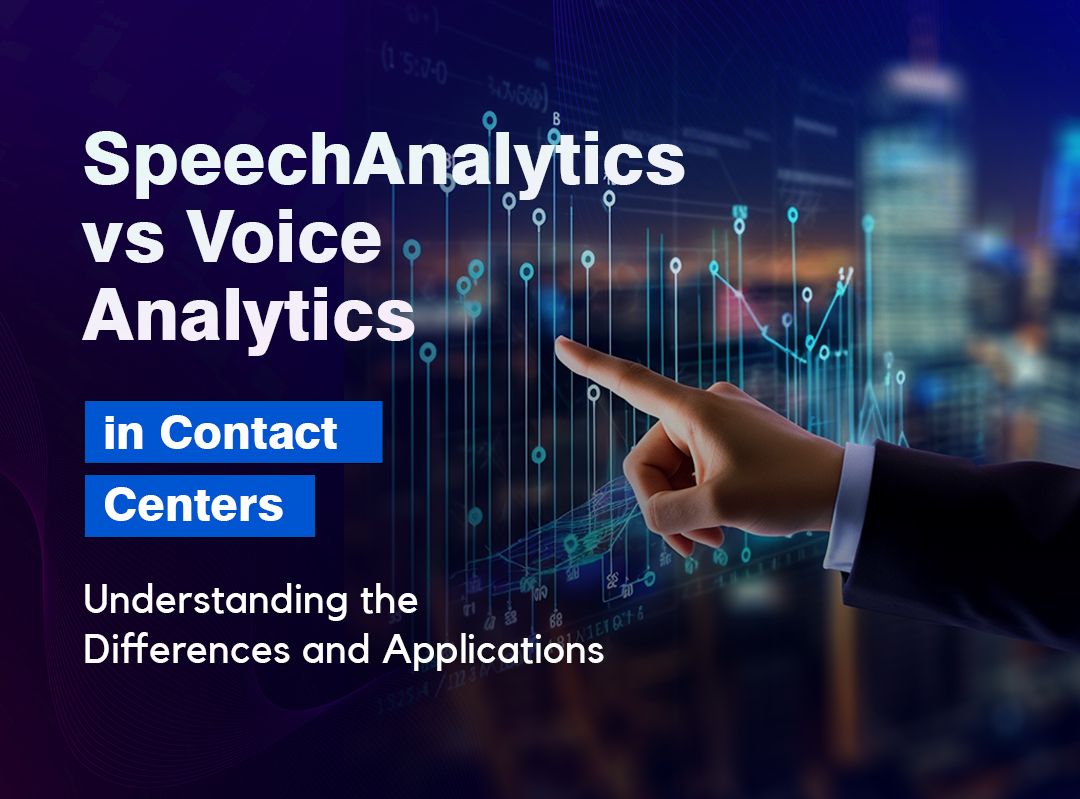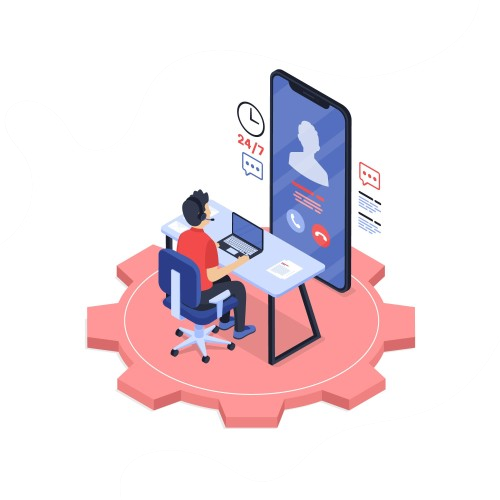In the fast-paced world of customer service, contact centers are at the forefront of ensuring seamless communication between businesses and their clients. With advancements in technology, contact centers are leveraging innovative tools to enhance their operations, one of which is analytics. Among the myriad of analytical tools available, two terms often crop up: Speech Analytics and Voice Analytics. While these terms might seem interchangeable at first glance, they harbor distinct functionalities and applications within the realm of contact centers. Let’s delve into the nuances of Speech Analytics vs Voice Analytics to decipher their unique contributions to contact center management.
Understanding Speech Analytics:
Speech Analytics involves the analysis of spoken language within recorded conversations. It encompasses a broad spectrum of capabilities, including transcribing conversations, detecting keywords and phrases, sentiment analysis, and trend identification. By utilizing natural language processing (NLP) and machine learning algorithms, Speech Analytics sifts through vast volumes of audio data to extract valuable insights. The primary objective of Speech Analytics in contact centers is to uncover actionable intelligence from customer interactions. It enables contact center managers to identify recurring issues, gauge customer satisfaction levels, and assess agent performance. For instance, by analyzing customer sentiment, managers can pinpoint areas of improvement in service delivery and product offerings. Moreover, Speech Analytics aids in compliance monitoring by detecting regulatory violations and adherence to scripting guidelines. This ensures that agents adhere to prescribed protocols during customer interactions, mitigating legal risks and maintaining regulatory compliance.


Unveiling Voice Analytics:
Voice Analytics, on the other hand, focuses on the quantitative aspects of audio data rather than the content of conversations. It involves analyzing the acoustic features of speech, such as tone, pitch, and speaking rate, to glean insights into customer behavior and emotions. Voice Analytics leverages signal processing techniques to quantify vocal characteristics and patterns. In contact centers, Voice Analytics plays a pivotal role in understanding customer emotions and intentions based on vocal cues. By analyzing changes in pitch or tone, Voice Analytics can discern moments of frustration, satisfaction, or urgency during interactions. This enables contact center managers to tailor their responses accordingly, fostering empathetic and personalized customer experiences. Furthermore, Voice Analytics facilitates speaker recognition, enabling contact centers to authenticate customers based on their unique vocal signatures. This enhances security measures and streamlines the authentication process, minimizing the need for intrusive security questions or verification procedures.
Differentiating Between the Two:
While Speech Analytics and Voice Analytics share the common goal of extracting insights from audio data, their methodologies and applications diverge significantly.
1. Focus of Analysis: – Speech Analytics : Analyzes the content of conversations, including keywords, sentiment, and compliance adherence.
– Voice Analytics : Analyzes acoustic features of speech, such as tone, pitch, and speaker recognition.
– Speech Analytics: Generates insights related to customer feedback, agent performance, and compliance monitoring.
– Voice Analytics: Generates insights into customer emotions, intentions, and authentication based on vocal characteristics.
– Speech Analytics: Primarily used for quality management, compliance monitoring, and trend analysis.
– Voice Analytics: Used for emotion detection, speaker recognition, and enhancing customer experiences.


The Synergy of Speech and Voice Analytics:
While Speech Analytics and Voice Analytics offer distinct functionalities, their combined utilization can unlock synergistic benefits for contact centers. Integrating both approaches enables a comprehensive analysis of customer interactions, encompassing both the content and emotional nuances of conversations. By leveraging Speech Analytics to decipher the content of conversations and Voice Analytics to discern emotional cues, contact centers can gain a holistic understanding of customer sentiments and behaviors. This holistic approach empowers contact center managers to tailor their strategies effectively, from optimizing agent training programs to refining customer engagement tactics. Furthermore, the integration of Speech and Voice Analytics enables proactive problem-solving by identifying emerging trends and issues in real-time. Whether it’s detecting customer dissatisfaction or recognizing potential compliance risks, contact centers can swiftly address concerns before they escalate, thereby enhancing operational efficiency and customer satisfaction.
In conclusion while Speech Analytics and Voice Analytics serve distinct purposes in contact center management, their synergistic integration holds the key to unlocking actionable insights and fostering enhanced customer experiences. By harnessing the power of both analytical approaches, contact centers can navigate the dynamic landscape of customer service with agility and precision, driving sustainable growth and differentiation in the competitive market landscape.
Discover the power of TransMon, embraced by contact centers everywhere. With a simple click, TransMon extracts insights from conversations, empowering you to monitor, evaluate, and coach agents for enhanced customer service. Happy customers mean increased revenue, positive word-of-mouth and long-term business growth. Check out our glowing 4.9-star review on G2 and request a free demo today.




